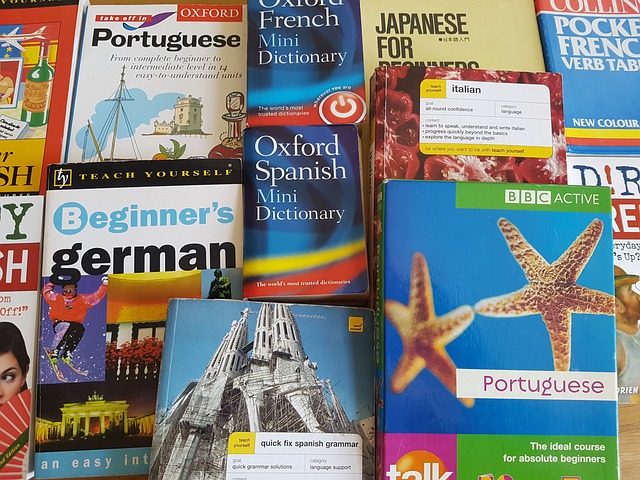Read time : 5 mins
Level : Intermediate

By Caitriona Maria | Wealth of Geeks undefined
Only 21.9% of Americans speak two or more languages in a world where over half of the globe’s population is estimated to be bilingual.
Although the United States is a global leader in some respects, a new generation of Americans is growing up in an increasingly interconnected world and will need to speak more than English to succeed.
Parents seeking advantages for their children in the global market should prioritize bilingualism. With various leading languages to choose from, knowing which to study is half the battle.
According to the World Economic Forum, Spanish and Mandarin are the top two languages in the world. Experts also suggest French as the language of international diplomacy; it’s one of the two official working languages of the United Nations.
Diversity in America
The United States Census Bureau started quantifying language diversity over a century ago. By asking participants what language they speak at home, the government tracked the changing landscape within the country.
Since 1980, the number of Americans who speak a language other than English has tripled. This group, age five and older, also spoke English “very well,” demonstrating true bilingualism.
While language diversity within the United States has increased, most Americans remain monolingual, speaking only English (78%). Learning a second language will not only help Americans internationally, but it also improves communications with the growing immigrant population at home.
The Most Useful Languages Today
- Spanish
Of the many languages spoken in the United States, the The Center for Immigration Studies identifies Spanish as the most vital. The United States is the second largest Spanish-speaking country in the world.
Spanish learners in the United States benefit from easy access to native speakers. Developing and maintaining proficiency in a language requires consistent exposure.
Jess Brooks, the Early Childhood Education Specialist at Hessunacademy, agrees that learning Spanish should be a priority. “Given the context of the USA, with its significant Hispanic population, Spanish undoubtedly stands out as one of the most advantageous languages.”
Globally, there are almost 600 million Spanish speakers. Rafaella Palumbo, founder and director of Languages Alive, has studied linguistics and specializes in language tuition for children and adults.
According to Palumbo, trends in the U.S. economy show an increasing demand for proficiency in Spanish. Palumbo also notes that the language should not be too difficult for English speakers to pick up as “its alphabet and grammar structure render it a relatively accessible language.”
- Mandarin
One-fifth of the planet speaks Chinese. Mandarin Chinese, specifically, is the most widely spoken first language in the world.
In recent years, China’s economy has boomed, making it the second-largest economy in the world behind the United States. China is a crucial business partner for companies of all sizes. Employers increasingly seek Mandarin speakers to liaise with suppliers, customers, and partners in China and Asia.
“With China’s rising influence in global affairs and commerce, proficiency in Mandarin offers a competitive edge in various sectors, from business to diplomacy,” says Brooks.
Even though Mandarin is difficult for Westerners, it’s worth learning. “Ultimately, while Mandarin Chinese may pose some challenges to children who learn it at a later stage, it’s indisputable that a substantial number of Mandarin Chinese speakers can be found in both China and worldwide,” explains Palumbo. “Additionally, Mandarin Chinese ranks as the second most widely used language on the Internet, and a recent report by the British Council highlighted Chinese as one of the top 10 languages with significant future importance.”
- French
English and French are the working languages of the United Nations for day-to-day professional exchanges. Proficiency in French opens avenues for business and diplomacy.
The Organization of International Francophonie counts 320 million French speakers worldwide. French is an official language of 29 countries, including the United States’ northern neighbor, Canada.
Like Spanish, its similarities to English in alphabet and vocabulary make French highly accessible as a second language regardless of starting age.
When Should Second Language Learning Begin?
Palumbo emphasizes the importance of starting early. “The best age for a child to learn a second language is from birth; in fact, researchers agree the cut-off age for a child to reach a native-like fluency is to be exposed to a second language within the first three years of birth.”
“Afterwards, it’s still not clear whether children will ever achieve complete native-like fluency in their second language. What we know is that they can achieve a native-like accent within the age of seven. The ability to reproduce the new language phonology steeply declines from the age of eight in most cases.”
Studies suggest that the earlier a child is exposed to a second language, the greater the likelihood of fluency. Regular practice makes perfect. “The key is to nurture a child’s innate curiosity and provide them with the resources and environment conducive to their linguistic journey,” Brooks points out.
“Nevertheless, the best age period appears to be before puberty. Until this point, children’s brains are rapidly developing and forming connections. After, these connections are pruned or strengthened on a ‘use it or lose it’ principle. But that doesn’t mean older second language learners can’t outperform younger ones with the right teaching and learning strategies.”
Lifelong Benefits of Bilingualism
Learning a second language expands opportunities. Bilingual people enjoy increased employability. They also have an advantage over their monolingual counterparts in industries like international business, translation, tourism, and hospitality. Speaking more than one language can also lead to higher wages. A 2023 study showed that bilingualism resulted in higher pay, even in low-income industries.
Beyond pay, mastering languages like Spanish and Chinese offer access to cultures and people at a deeper level. Travel experiences become richer when people are able to communicate directly with natives. With apps like Duolingo, Rosetta Stone, and many others, there are countless convenient methods to begin learning a second language today.
It’s never too late to start learning another language. Even though early education is pivotal to mastering accents and native levels of fluency, consistent practice is equally important. Proper learning strategies can lead to greater success, even for those starting later in life.
This article was produced by TPR Teaching and syndicated by Wealth of Geeks.
